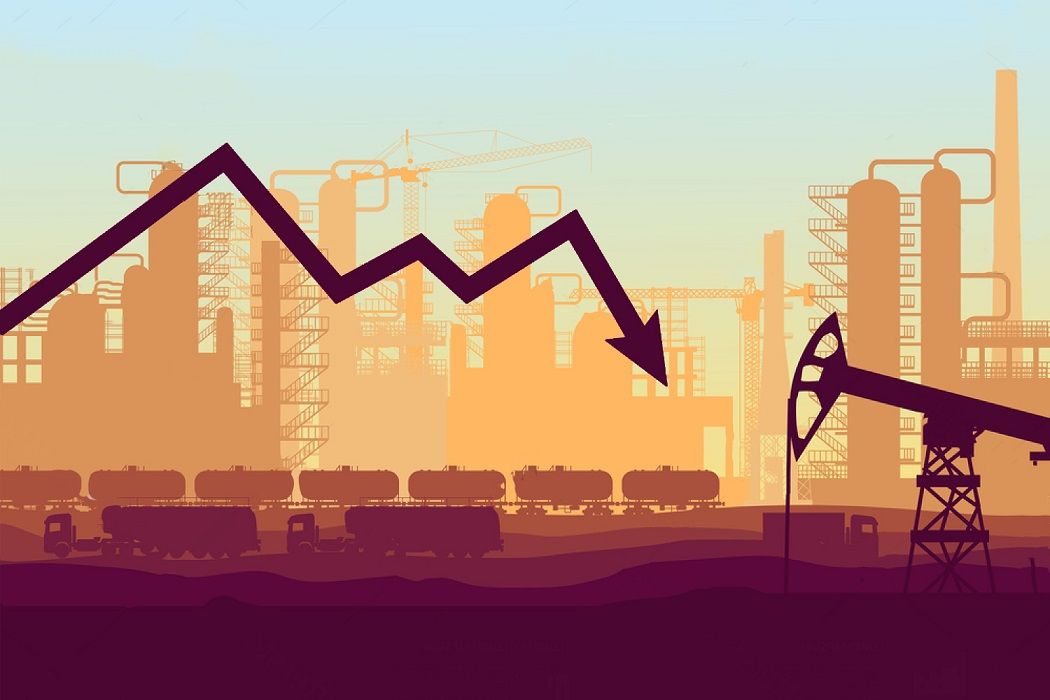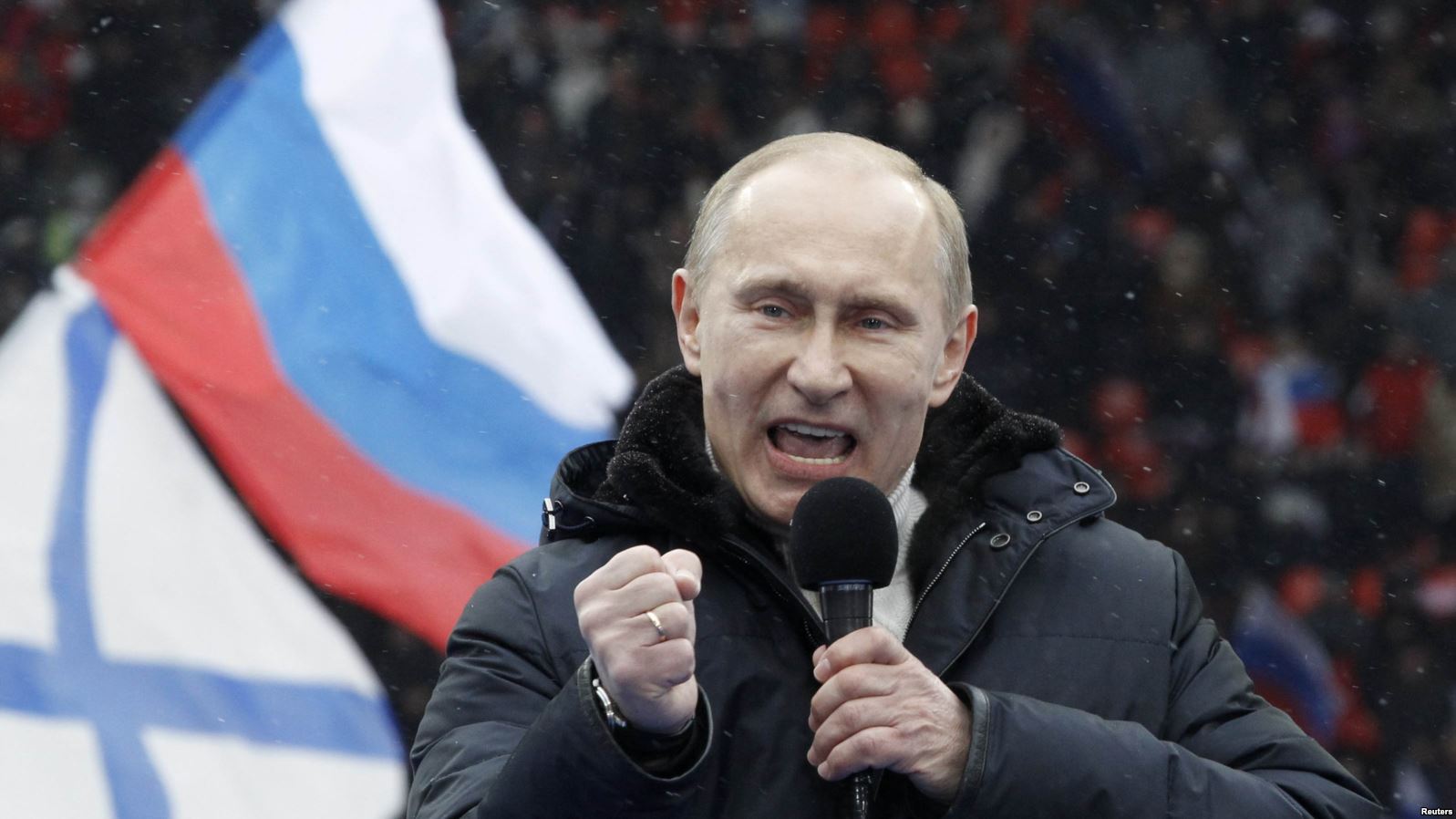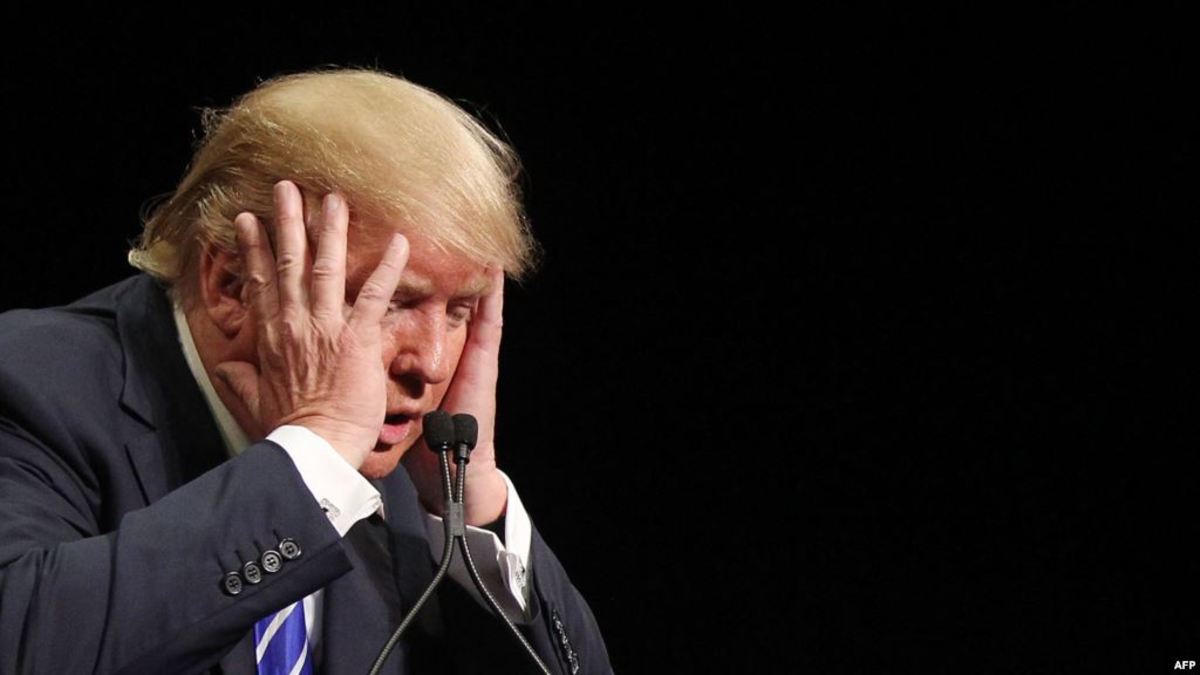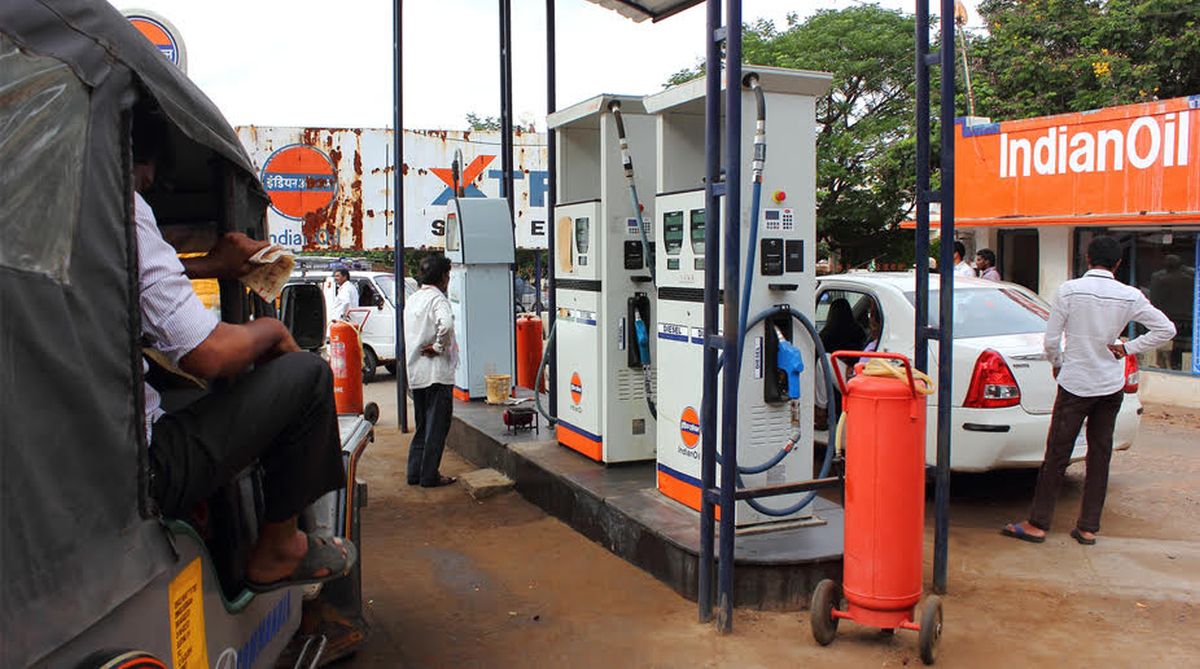
Most of the world’s oil is controlled by a very small group of people- the Middle Eastern cartel called OPEC, US, and Russia. And with great resources comes great responsibility. Their job is to manipulate the oil supply to ensure prices the world over remain stable.
Unfortunately, with Coronavirus having taken centre stage, demand for oil isn’t exactly like it used to be. And in a last-ditch effort to keep prices stable, OPEC decided to push for more production cuts. However, Russia disagreed, leading to one of the most brutal price wars in history.
Context
The talks between OPEC and Russia had finally collapsed, possibly precipitating a price war that could push oil (Brent Crude) down to as much as $20 a barrel. For context, last month oil was trading as high as $60 dollars a barrel. Hence the concept of OPEC+ stands scrapped!
Fall in global crude oil prices

- Oil prices have been tumbling now and it’s hovering at about $35 a barrel now (it was $65 last December).
- And of course, this is horrible news for all the nations that export oil.
Background
Before we get to the story on OPEC+, lets quickly recap :
OPEC

- OPEC is a permanent, intergovernmental organization, created at the Baghdad Conference in 1960, by Iran, Iraq, Kuwait, Saudi Arabia, and Venezuela.
- It aims to manage the supply of oil in an effort to set the price of oil in the world market, in order to avoid fluctuations that might affect the economies of both producing and purchasing countries.
- It is headquartered in Vienna, Austria.
- OPEC membership is open to any country that is a substantial exporter of oil and which shares the ideals of the organization.
- Today OPEC is a cartel that includes 14 nations, predominantly from the middle east whose sole responsibility is to control prices and moderate supply.
Russia
- Russia happens to be the 3rd largest supplier of Oil in the world (12% of all oil produced).
- This means they too have considerable influence in controlling the global oil supply.
- And back in 2017, OPEC and Russia started colluding informally to cut production and prop up prices. This came against the backdrop of oil having made some terrible lows.
- So two big parties come together to keep prices stable and it obviously helped.
OPEC plus and its Fall
OPEC plus
- The non-OPEC countries which export crude oil along with the 14 OPECs are termed as OPEC plus countries.
- OPEC plus countries include Azerbaijan, Bahrain, Brunei, Kazakhstan, Malaysia, Mexico, Oman, Russia, South Sudan and Sudan.
- Saudi and Russia , both have been at the heart of a three-year alliance of oil producers known as OPEC Plus — which now includes 11 OPEC members and 10 non-OPEC nations — that aims to shore up oil prices with production cuts.
Why OPEC plus came into existence?

When Russia concluded the Vienna Agreement in 2016, the Russian leadership believed that it would help prepare the country for the Russian presidential elections in March 2018. Higher oil prices ensured the Kremlin’s financial capacity to lead a successful electoral campaign.
This changed the regime’s priorities – from satisfying the needs of the general population to ensuring the sustainability of the Kremlin’s alliance with powerful tycoons, including those controlling oil production who would, in the end, either approve a successor to Putin or a constitutional amendment that would allow him to stay in power for two more terms.
- For Saudi Arabia, turning what had been an ad hoc coalition into a formal group provides a hedge (protection) against future oil-market turbulence.
- The kingdom now leaned on a group representing almost half of global oil output for support.
- For Russia, the formalization of the group helps expand Putin’s influence in the Middle East
- However both reportedly aimed at causing a drop in oil prices in order to hit US shale producers, who have continued to benefit from OPEC production cuts by expanding their market share.
Why did OPEC+ talks fail?
- Because with Coronavirus having taken centre stage, things have changed. Air travel has taken a beating. Industries are shutting down. All trading activities are on edge.
- And the global economic outlook has soured rather considerably. So OPEC has been insisting on deep production cuts to keep prices stable.
- Now nobody knows for sure why Russia doesn’t want to follow through. Maybe, it’s because Putin doesn’t take orders from a 34-year-old Saudi prince.
- Experts contend that this is Russia testing the boundaries of this alliance considering the simple fact that Saudi and other OPEC members are negotiating so hard tells us the kind of influence Russia holds in the market.
Russia’s pullout
- It seems Putin is able to secure another six-year term with a high enough turnout and significantly high approval rating.
- Since then, the political goals of the Russian regime have changed, which required a different approach to cooperation with OPEC+.
- Since Corona outbreak, the Kremlin’s own perception of OPEC+ has changed. It has come to believe that the cartel is losing its ability to shape the global energy market due to the growing oversupply and the beginning of a global energy transition.
- The Russian leadership finally accepted that the era of high oil prices was gone and that it will not come back.
Global Implications
- OPEC is on the offensive and they’ve already started selling oil at deep discounts. They’ve also threatened to flood the markets with oil in the coming days.
- Saudi Aramco not only announced that it would increase its crude supplies to the market but also said it received instructions to increase its maximum sustainable oil output capacity.
- The increase in oil supplies to the market will drive oil prices down and launch an economic “war of attrition” between oil producers.
- In the end, the companies that have the capacity to survive a prolonged period of low oil prices will succeed in securing their share of the market and win the war.
- Moscow’s limited capacity to increase oil output means it will be unable to compensate for all losses caused by the reduction in prices by upping its production.
- However, the oil price Russia needs to keep its budget balanced is lower than the one needed by Saudi Arabia and the UAE ($42 pb compared to $70-80 pb).
Immediate Injury to US

- The most immediate pain is likely to be felt in the U.S. shale industry, where companies have already been struggling as investors lost enthusiasm for the sector.
- In part, that’s what the Russian energy ministry has been aiming for.
Significance for India

Petrol and diesel prices in India, however, haven’t yet been reflecting the drop in global oil prices. In fact, crude oil prices have halved since the start of 2020, but retail prices have declined by only around 7%.
Many factors — pricing mechanism, currency movements and taxes – queer the pitch on passing on crude oil cost benefits to customers.
1) Product pricing not crude linked
The price of petrol and diesel in India is not determined by the actual costs incurred by refiners on crude oil sourcing, refining and marketing. Rather, a formula — Trade Parity Price (TPP) — is the starting point for pricing these products.
- TPP is the weighted average of import parity price (IPP) and export parity price (EPP) with weights of 80 and 20, respectively.
- IPP is the price importers would pay in case of actual import of the petrol and diesel at Indian ports, while EPP is the price oil companies would realize on export of petrol and diesel.
- In short, the product pricing assumes that 80 per cent of the petrol and diesel is imported into India and 20 per cent is exported.
- Essentially, the TPP of petrol and diesel in India is determined based on prices of petrol and diesel prevailing in the international market – and not on the basis of crude oil prices.
Demand and supply dynamics globally could be different for the raw material (crude oil) and the finished products (petrol and diesel), and so could their price trajectory — in terms of direction and/or timing.
2) Daily pricing; fortnightly average
- The TPP, which is quoted in dollars, is converted to rupees.
- To this is added the cost of inland freight, marketing costs and margins charged by the oil companies, the dealer commission and the taxes levied by the Central and State governments.
- Until then, prices for these fuels used to be determined on a fortnightly basis.
- But even under the ‘daily pricing’ mechanism, in which the prices of petrol and diesel are revised daily, the price is based on a 15-day rolling average rate of the international benchmarks of petrol and diesel.
- For instance, the price of petrol in India would be based on the international prices of petrol during the preceding fortnight.
- So, international prices of petrol and diesel do not reflect immediately in India — that happens with a time lag.
3) Forex factor
- It is also to be noted that while crude oil prices have crashed, the rupee has been slipping. From 71.2 per dollar in early January 2020, the rupee now trades at 74.4.
- This rupee weakness offsets to some extent the benefit of lower international crude oil and petrol/diesel prices, which are quoted in dollars.
- This will chip away at the price reduction in petrol and diesel.
4) Tax burden
- Next, even if international prices of petrol and diesel are low over an extended period, it does not always reflect in the price of these products in India.
- Blame this on the heavy taxes imposed by both Central and State governments.
- For instance, last time, when the crude oil rout was underway from mid-2014 to early 2016, the Governments at the Centre and many States chose to pocket most of the gains through regular hikes in excise duty and VAT (value added tax) on petrol and diesel.
- Not just the Centre, many states also upped their VAT rates when the previous oil rout was underway.
- High VAT rates are why customers in some States such as Maharashtra and cities such as Mumbai have it worse than others.
- In effect, only a minor portion of the crude oil cost reduction benefit was passed on to consumers.
5) Other factors
- One variable impacting the mismatch is the Rupee. The value of the rupee has depreciated by about 3.6% vis-a-vis the U.S. dollar this year.
- And this is kind of important because we buy a large part of our oil using dollars. So a devalued Rupee means we have to spend a lot more money to buy the same amount of oil we used to.
- This effectively wipes out some of the gains that we might have made from the drop in oil prices.
- There’s also the possibility that the government might not choose to pass on the benefits of lower prices to consumers at all.
- Instead, Govt. has decided to raise Excise duties on petrol and diesel- money which will go directly into central and state coffers.
Potential benefit
Who gains from the fall?
- Oil Marketing Companies (like BPCL and IOCL) choose to retain most of the gains.
- Because when prices rise and public pressure forces governments to act, the government asks the OMCs to take a hit on their margins so people can continue buying oil at a modest price.
- Granted the government does reimburse some of this money, but it’s not very reliable.
- So when prices dip, it’s an opportunity for OMCs to shore up their margins by keeping some of the gains themselves.
Point of Interest: The governments can force OMCs to absorb the losses because they have majority ownership in most of these companies.
Benefits for India
- India imports over 80% of its crude oil requirements, making us inadvertent winners in this price war.
- India’s crude oil import bill during FY 2018–19 was around $112 billion. And for each dollar reduced per barrel now, this bill drops by $1.45 billion, year on year.
- This kind of decrease is substantial because it helps us in reducing the big bad number everyone’s scared of — the Current Account Deficit.
- Also, there is another more obvious benefit when oil prices tank. If the price reduction is passed on to customers in the form of lower petrol and diesel prices, we get to save on fuel.
Increasing Strategic Petroleum Reserves (SPR)

- Away from the geopolitical firestorm, India is focused on topping up its SPR.
- According to experts, India will spend about $ 670 million to buy oil at around $30 a barrel, for its strategic reserves, drawn from Saudi Arabia and the United Arab Emirates. Deliveries will start around April-May.
- The Strategic Petroleum Reserves Ltd. (ISPRL), a subsidiary of the Oil Industry Development Board, run by the Ministry of Petroleum and Natural Gas manages these reserves.
- Unlike India, it is estimated that China will achieve its strategic petroleum reserve target of 90 days this year.
When did India plan for SPR?
- In order to manage contingencies, we need at least one month of strategic petroleum reserves, which was the original plan when the exercise began in 2003.
- Unsurprisingly, the government is considering building 30 day reserves in the first phase which will be eventually extended to 60 and, finally 90 days.
- In June 2018, the Cabinet had cleared an additional 6.5 million tonne SPR facilities at Chandikhol in Odisha and Padur in Karnataka, to augment India’s energy security by 11.5 days.
- Two more facilities — one in Bikaner and another in Rajkot — are also expected to be initiated soon to enable storage for 30 days.
- The ISPRL has also been asked to pin down new sites so that a 90-100 days of oil reserve stocks are eventually available at all times.
References
https://www.aljazeera.com/indepth/opinion/fall-opec-age-oil-price-wars-200312124946313.html
https://finshots.in/archive/why-isnt-fuel-prices-coming-down-in-india/
https://finshots.in/archive/why-oil-prices-have-been-tanking/
https://www.nytimes.com/2019/12/05/business/opec-oil-production-cuts.html
